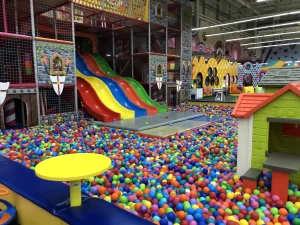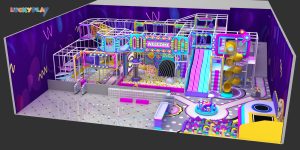Introduction: The Timeless Allure of the Swing
Few things in childhood feel as magical as the sensation of soaring through the air on a playground swing. That back-and-forth rhythm, the wind brushing past your cheeks, and the gravity-defying lift when you reach the peak and all of it makes swinging an experience that children remember well into adulthood.
Playground swings have stood the test of time, evolving from simple rope-and-board contraptions into sophisticated, safety-tested equipment designed for people of all ages and abilities. In this article, we explore the fascinating world of playground swings. Their history, types, developmental benefits, design, and why they remain a must-have feature in any play space.
The History of Playground Swings
Swings have existed for centuries. Some of the earliest known depictions of swings date back to ancient Greece, where they were crafted from vines or ropes attached to tree branches. In Asia, swings were used not just for recreation but also during cultural and seasonal festivals.
In the Western world, playground swings gained popularity in the 19th century, especially during the rise of urbanization. As cities grew and outdoor space became limited, swings were installed in parks and schools to give children a structured way to play and exercise.
By the early 20th century, public health experts and educators recognized the value of physical activity in childhood development. Swings, along with slides, seesaws, and merry-go-rounds, became standard features in public playgrounds across Europe and North America.
Types of Playground Swings
Playground swings come in various designs, each catering to different age groups, abilities, and safety requirements. Here is a breakdown of the most common types:
- Belt Swings
The classic belt swing is made from a flexible rubber or plastic seat suspended by chains or ropes. These are best suited for older children who can hold on and balance themselves.
- Bucket Swings
Designed for toddlers and younger children, bucket swings have high back and side support with leg holes. This helps prevent falls while still offering the joy of swinging.
- Tire Swings
Tire swings are made from recycled tires and often hang from a single rope or multiple chains. They can rotate in all directions, adding an extra thrill. Some are large enough to accommodate multiple children.
- Platform Swings
These are flat, often square-shaped swings that can fit one or more children. They are especially useful for inclusive play, allowing children with mobility challenges to lie down or sit in different positions.
- Nest or Disc Swings
Also known as “bird’s nest swings,” these are round with a webbed or netted base. They are large and can hold multiple users at once, offering a communal play experience.
- Adaptive Swings
Created for children with special needs, adaptive swings come with harnesses, full-body support, or wheelchair accessibility. These make swinging possible for kids who might otherwise be left out.
Developmental Benefits of Swinging
Swinging is not just fun, and it is foundational to childhood development. Here is how swings contribute to a child’s growth across various domains:
- Physical Development
- Core Strength & Balance: Children engage their abdominal muscles to maintain balance on a swing.
- Motor Skills: Pumping legs, holding chains, and jumping off swings all improve coordination.
- Sensory Integration: The motion helps the brain process movement and spatial orientation, which is especially helpful for children with sensory processing challenges.
- Cognitive Benefits
- Timing and Rhythm: Swinging teaches cause and effect. Children learn that pumping harder increases speed.
- Spatial Awareness: Moving forward and backward helps with understanding distance and motion.
- Focus and Attention: The repetitive motion of swinging has a calming effect, helping kids improve focus afterward.
- Emotional and Social Growth
- Confidence Building: Learning to swing independently is a huge milestone for young children. There are lots of confidence building to be found on the playground, and children won’t even realize that is what they are learning through their play. If your child is shy or needs a bit more time to come out of their shells with others, take them to the local park and see how it can support their development
- Risk Assessment: Risky play refers to thrilling and exciting activities that involve some element of risk, such as climbing, jumping, balancing, or navigating obstacles. These activities help children challenge themselves, assess risks, and push boundaries in a controlled environment. Swinging gives children the opportunity to take measured risks, building resilience.
- Social Interaction: Swings promote turn-taking and sharing, valuable interpersonal skills. By taking turns, we create a balanced and respectful exchange that fosters understanding, empathy, and effective communication. At its core, turn-taking involves actively listening to others and waiting for our turn to speak. It requires patience, respect, and the ability to regulate our own impulses. By taking turns, we create a balanced conversation where everyone has the opportunity to express themselves and be heard. This level of engagement fosters understanding, empathy, and connection.
Swing Safety: What Parents and Caregivers Should Know
While swinging is generally safe, it is important to follow basic guidelines to minimize the risk of injury:
✅ Safety Tips:
- Age-Appropriate Equipment: Toddlers should never use belt swings. Always use bucket swings for younger children.
- Inspect Regularly: Check for rust, frayed ropes, loose bolts, and sharp edges.
- Soft Ground Cover: Swings should be installed over shock-absorbing materials like rubber mulch, sand, or engineered wood fiber.
- Teach Proper Use: Instruct children to hold on tightly, sit properly, and wait until the swing stops before getting off.
- Supervise: Keep a close eye on toddlers and younger kids while they play.
❌ Avoid:
- Twisting the chains
- Walking in front of or behind an active swing
- Overcrowding swings (one child per swing, unless designed for multiples)
Design and Installation Considerations
Whether you are designing a backyard play area or a public playground, swings require thoughtful planning:
➤ Space Requirements
Each swing bay (the area covered by a swinging arc) needs adequate clearance on all sides. This prevents collisions and allows room for safe movement.
➤ Materials
Modern swings are made from durable, weather-resistant materials. Chains are often coated in plastic to avoid pinched fingers. Seats should be soft yet strong.
➤ Anchor and Support
Swings should be anchored into the ground securely. Steel or galvanized poles are common in public setups, while wood is more common in residential environments.
➤ Inclusivity
Inclusive playgrounds should feature adaptive swings so all children, regardless of physical or cognitive ability, can still enjoy swinging.
Swinging at Home: Creating a Personal Play Space
Backyard swings are a wonderful addition for families with kids. Here is what you need to know if you are considering installing one at home:
🛠 DIY or Ready-Made?
You can build a wooden swing set from scratch if you are handy, or buy a prefabricated kit from major retailers.
🏡 Location Matters
Choose a flat, open area away from fences, trees, or other structures. Ensure there is ample fall space.
🧱 Surface Options
Even at home, avoid installing swings over concrete or asphalt. Opt for grass, mulch, or safety mats.
🧼 Maintenance
Clean seats and chains regularly. Check for signs of wear or damage at least monthly.
The Emotional Connection: Why Kids Love Swings
Swings are often one of the first pieces of playground equipment a child experiences. They are simple yet deeply satisfying. Psychologists say swinging mimics rocking and one of the earliest comforting motions a baby experiences. This may be why swings remain emotionally comforting even as children grow older.
Furthermore, swings offer a rare chance for children to feel weightless and in control, something that is especially empowering in a world where kids are often told what to do.
Swings Around the World
Different cultures put their own spin on swings:
- India: Wooden or cloth swings are hung indoors during festivals like Janmashtami.
- Thailand: In the past, a Giant Swing in Bangkok was used during religious ceremonies.
- Indonesia: Traditional village swings are built from bamboo and rope.
- Japan: Public swings are common in parks and often come in vibrant colors with padded seats.
Swings for All Ages
Though traditionally associated with young children, swings are now being designed for older kids, teens, and even adults. “Swing sets for all” are showing up in urban parks, community spaces, and wellness centers, promoting relaxation and nostalgia.
Therapeutic swings are also used in occupational therapy to help individuals with autism, sensory disorders, or physical limitations. These swings are carefully engineered to provide calming vestibular input.
Often associated with carefree childhood memories, the simple motion of swinging back and forth is more than just sitting around. It is a heart-pumping and brain-boosting workout! From physical health to mental well-being, social development, and even endorphins, swinging offers a host of benefits for children and adults of all ages.
The Future of Playground Swings: Innovation Meets Imagination
While playground swings have long been a staple of outdoor recreation, their future is being shaped by an exciting convergence of technology, inclusive design, sustainability, and artistic creativity. As designers and child development experts work together to reimagine the playground of tomorrow, swings are evolving beyond simple back-and-forth motion to become more interactive, intelligent, and impactful, serving wider age groups, communities, and purposes. Here’s how the humble swing is swinging into the future:
Smart Swings: Integrating Technology into Play
One of the most remarkable innovations in modern playground equipment is the emergence of smart swings. These are no longer just passive play tools. They’re interactive devices that incorporate motion sensors, accelerometers, Bluetooth connectivity, and even LED lighting to offer a more engaging experience.
For example, smart swings can track how high a child swings, how many times they’ve gone back and forth, or even connect with a mobile app to gamify physical play. Some models play sounds or music when in motion, creating a multi-sensory experience that blends physical activity with auditory feedback.
In public spaces, these technologies can be used for educational purposes like integrating learning games where children solve puzzles based on the number of swings or for data collection on usage patterns, helping cities better design and maintain parks. Smart swings may also be useful in physical therapy settings, providing therapists with real-time data on movement quality and duration.
Solar-Powered Swings: Where Energy Meets Motion
Imagine a swing set that powers the very lights that illuminate the park after dark. This is becoming a reality thanks to solar-powered and kinetic energy swings. Some cutting-edge swing sets are being designed with embedded systems that convert kinetic energy (from swinging) into stored electricity. That energy can then be used to power LED lighting around the park, charge mobile devices, or provide power for nearby features like water fountains or Wi-Fi hotspots.
Incorporating solar panels onto swing frame structures allows them to capture energy during the day, while motion generators within the swing mechanism itself can supplement the energy created by each user. These innovations not only promote green energy use, but they also serve as an educational opportunity for children to learn about sustainability and clean energy through play.
As urban centers strive to meet environmental goals and reduce energy consumption, motion-powered swings could become a signature element of eco-conscious public spaces where every movement contributes to a more sustainable community.
Artistic Swings: Blending Functionality with Public Art
In cities around the world, there is a growing trend to merge playground equipment with public art. Swings, with their dynamic motion and simple structure, offer a perfect canvas for creative expression. Artistic swings are being installed in parks, plazas, and community centers where they serve not just as recreational tools, but as interactive art installations.
These swings may feature custom-built frames in sculptural forms, vibrant color palettes, or even built-in projection systems that display digital visuals as the swing moves. Some installations incorporate sound design, playing musical notes or tones with each swing arc, creating a playful symphony powered by children’s movement.
The goal isn’t just to beautify space. It’s to make art accessible and participatory. These installations draw in all ages, creating a multi-generational space where families, artists, and children come together. They also transform parks into destinations, inviting conversation around the importance of creativity, community, and shared experiences in public spaces.
Sensory Swings: Expanding Inclusion in Therapeutic and Educational Settings
As awareness and advocacy for neurodivergent children and individuals with sensory processing disorders grow, so does the demand for sensory-inclusive playground equipment. In this future-forward vision of inclusive design, sensory swings are leading the charge.
Sensory swings are engineered to meet the unique physical and emotional needs of individuals with autism, ADHD, anxiety disorders, and sensory integration challenges. These swings often include:
- Deep pressure harnesses or cocoons to provide a calming, womb-like enclosure
- Low-impact, smooth-glide motions to help regulate overactive sensory systems
- Multi-sensory features like vibration, weighted blankets, or tactile surfaces for added stimulation
- Indoor adaptations for use in sensory rooms, special education classrooms, and pediatric clinics
These swings are more than a source of fun. They serve as tools for emotional regulation, vestibular therapy, and cognitive engagement. In occupational therapy settings, therapists often use sensory swings to help children improve body awareness, balance, and focus, while also providing a calming, repetitive motion that reduces anxiety.
Conclusion: A Staple of Joy
Whether in a neighborhood park, a schoolyard, or a backyard, swings continue to capture the imagination of children everywhere. More than just play equipment, they are tools for growth, spaces for relaxation, and sources of endless joy.
As technology and design progress, the humble swing evolves while retaining its timeless appeal. And if there are kids who dream of flying, there will be swings waiting to lift them up.




